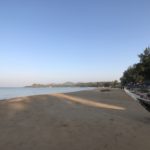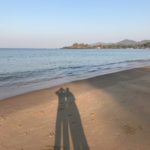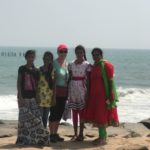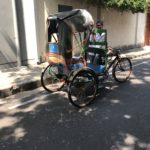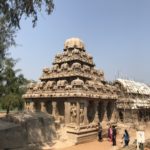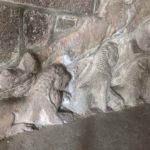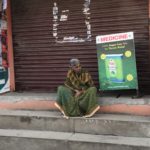“This is indeed India! the land of dreams and romance, of fabulous wealth and fabulous poverty, of splendour and rags, of palaces and hovels, of famine and pestilence, of genii and giants and Aladdin lamps, of tigers and elephants, the cobra and the jungle, the country of a hundred nations and a hundred tongues, of a thousand religions and two million gods, cradle of the human race, birthplace of human speech, mother of history, grandmother of legend, great-grandmother of tradition, whose yesterdays bear date with the mouldering antiquities of the rest of the nations—the one sole country under the sun that is endowed with an imperishable interest for alien prince and alien peasant, for lettered and ignorant, wise and fool, rich and poor, bond and free, the one land that all men desire to see, and having seen once, by even a glimpse, would not give that glimpse for the shows of all the rest of the globe combined.” – Following the Equator: A Journey Around the World by Mark Twain
Mark Twain’s observations continue to ring true a century later. It is a land astoundingly rich in history, architecture, culture and traditions. The vibrant colours, smells, noises and unceasing activity overwhelm the senses. Viewed from a 21st C perspective, however, the contradictions and disparities in human conditions and material wealth are disheartening. Travelling by train and car through the countryside takes us back to our time in Africa more than 40 years ago, as we see women (primarily) carrying bundles of firewood on their heads and fetching water from communal wells. The poverty evidenced in the towns and cities is staggering. India’s GDP is now the third largest in the world, after the US and China. And yet, while the poverty rate in India (21% of the population in 2011) has been declining since the 1980’s, the number of people living in dire poverty, or on less than $1.25 a day continues to climb. By virtue of its population, India is home to 1/3 of the world’s extremely poor people.(UN MDG report 2014). Since 1991, the gap between rich and poor has continued to widen. A survey by Oxfam found that, in 2017, one Indian billionaire was created every two days, with India’s top 1% of the population now holding 73% of the wealth. As the Oxfam report suggests, “the growing divide undermines democracy and promotes corruption and cronyism“.
People have spoken to us openly about the corruption endemic in India, something the Modi government has pledged to eliminate. In a recent survey by Transparency International (TI), an anti-corruption global civil society organization, India had the highest bribery rate among the 16 Asia Pacific countries surveyed. Nearly 7 in 10 people who accessed public services had paid a bribe. We were told that some who are clearly not in need pay to have their names included on a list to qualify for free housing and other assistance. While people we spoke with were sceptical about Prime Minister Modi’s commitment to root out corruption, there is encouraging evidence of a growing anti-corruption movement in civil society.
One tragic outcome of India’s failure to address these issues is an apparent dysfunctional public education system. In her powerful book, The end of Karma: Hope and Fury among India’s Young, New York Times reporter Somini Sengupta describes a system where, despite investments in schools, improved teacher-student ratios and free lunch programs, the majority of students fail to reach what the curriculum expects. Approximately 25% of teachers don’t show up to teach on any given day and student attendance is around 71%. A 2011 study referred to by Sengupta revealed that 40% of children drop out between Class 5 and Class 9. Among those who made it to Class 10, another 40% dropped out within a year. Despite its reputation as an IT powerhouse, fewer than 15% of college-aged Indians go to college. The challenges are enormous for a country whose population includes more than 300 million under the age of 15 and is expected to exceed that of China by 2022.
We had read that, today, there are more people in the world with cell phones than toilets. That would certainly appear to be the case in India, where cellphones are everywhere, while 600 million people do not have access to a toilet. While we were there, the Hindu Times announced that the Greater Chennai Corporation declared the city ‘open defecation-free’. The Modi government has also launched a “Clean India” campaign. This week, the Lancet published an article on the issue, reviewing a Bollywood movie that highlights challenges to achieving such goals. Apparently, for a variety of reasons, including cultural and religious impediments (having a toilet in the confines of a house is considered to be impure), there is a fair amount of resistance to having toilets in homes.
Parkinsons’s Disease in India :
The prevalence of PD in India is lower than estimates for North America and Europe, although the reasons for this are not known. A door-to-door survey done in Bangalore district in South Karnataka in India in 2004, found a rate of Parkinsonism of 33 per 100,000 (crude prevalence). (compared with a number of 200 per 100,00 in Canada). Given the size of India’s population, the numbers of persons with the disease in the country is large, at approximately 450,000.
Diagnosis and treatment of PD in India is hindered by inadequate awareness of the disease, low numbers of medical professionals in the public system with specialized training in PD, poverty, and near total absence of health insurance or social security. While drug costs in India are lower than in developed countries thanks to domestic pharmaceutical manufacture, drug treatment is still out of reach of many. The cost of medications generally can consume between 16-41.7% of an Indian patient’s income. Surgical treatment options for PD are even less accessible for patients of lower socioeconomic status. Many PD patients seek alternative medicine, Ayurveda being the common form available.
As a result of our unplanned departure, we were unable to meet with the Parkinson’s and Movement Disorders Society of India in Mumbai, as planned. As in BC, such support organizations are vital to affected persons: The President of the Parkinson’s Society (now the PMDS) has written that “The feeling of swimming together rather than sinking individually is a great step forward for the victims… Wide networks of patients (in India) have now been established, producing a strong bond of mutual, helpful existence.”
Sources: Review of research on PD in India. Ann Indian Acad Neurol. 2016 Jan-Mar; 19(1): 9–20.
Experiences of Parkinson’s Disease in India. The Lancet Neurology 2002. 1:258-262


